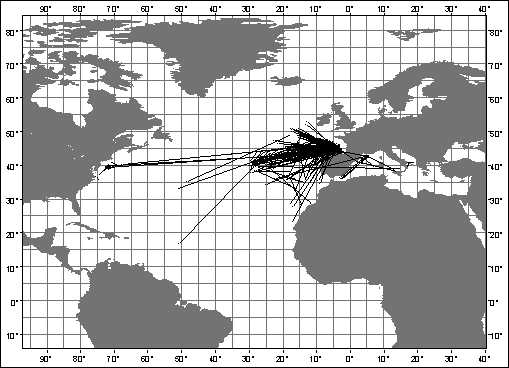|
In
the North Atlantic, both juveniles and adults apparently
spend winter time in the central Atlantic area (although
they have been found in the east and the west as well).
When water starts warming up in spring, young albacores
start a trophic (feeding) migration, heading to highly productive
waters in the Northeast Atlantic part of their distribution
range. In May, tuna start to concentrate in surface waters
near the Azores at 38ºN latitude and begin to move
north in waters of 17-20ºC of temperature. Within a
period of 1-2 months the population is located south-west
of Ireland and in the Bay of Biscay (Ortiz de Zárate
and Cort 1998). Although some authors hypothesised the existence
of two different trophic migration routes for juvenile albacore,
recent studies do not support that hypothesis (reviewed
in Arrizabalaga 2003). At the beginning of autumn albacore
starts migrating back to the mid Atlantic through the south
of Portugal, the Canary Islands and Azores.
|
|
The
trophic migration takes place for the first four years of
their lifetime untill they reach sexual maturity. Adult
albacore, on the other hand, undertake reproductive migrations
when summertime approaches. They migrate to their spawning
grounds in the western part of North Atlantic (offshore
Venezuela and Sargasso Sea) swimming at depths of 50-150
m.
Within the South Atlantic and the Mediterranean, very few
tagging experiments have been made and therefore little
is known about albacore migration patterns.
|
